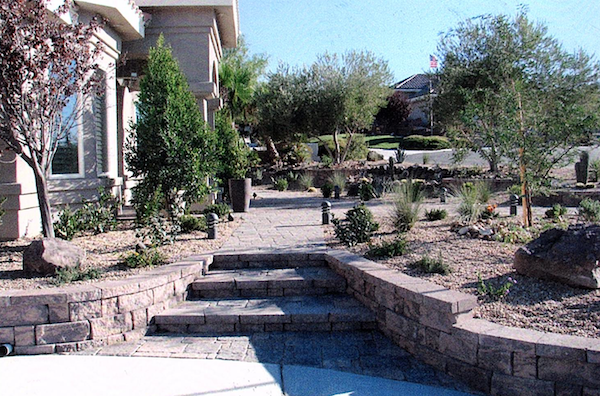
Xeriscaping is a landscaping term that refers to the practice of planting native plants, shrubs, and trees to reduce maintenance, water usage, and upkeep. It is most popular in the Western United States, where recent drought and water shortages have highlighted how wasteful keeping non-native species alive can be when it comes to sucking up water resources. And while many homeowners assume it means drab and colorless landscape, xeriscaping is more often than not achieved with stunning and beautiful results.
Does It Really Make a Difference?
Absolutely. By some accounts, over fifty percent of the water resources in many municipalities goes towards keeping landscape alive and well. Xeriscaping, by utilizing smart choice of vegetation, water saving irrigation techniques, and other water conservation measures, can cut down the water use in your home by up to 60%! That means big savings on water bills, a clean conscience when it comes to environmental responsibility, and best of all, this style of landscaping means the amount of time you’ll have to waste on maintaining your landscape will be reduced accordingly as well.
Xeriscaping Improves the Value of Your Home
For all these reasons, this landscaping practice isn’t just a good decision from an environmental standpoint, it’s also a great investment from a financial standpoint. Because it drastically reduces water usage and yard maintenance, it is a big selling point to prospective homebuyers. Most new homeowners aren’t going to take shine to a garden filled landscape that they’ll have to spend hours each week to maintain. But if they can have a beautiful yard without doing much work, then it’s an easy sell. In fact, property value increases of up to 15% are not unheard when this landscaping strategy is utilized.
Ready to start your xeriscaping?
Find ProsGo Native, Or at Least Think Climate When You Buy
Choosing the right vegetation is a big part of the equation with xeriscaping. When shopping for the plants to put in your yard, make sure they’re used to your native climate, or come from an area with similar demands. And be conscious of each plant’s needs when you plant. Hydrozoning refers to the practice of planting vegetation with similar water needs in the same area, making watering much more efficient in the end.
Xeriscaping Isn’t All about the Plants
Planting native species of plants isn’t the only strategy that makes this environmentally-friendly landscaping work. It’s actually a holistic philosophy that relies as much on irrigation practices, mulching, and smart landscaping layout as it does on low water vegetation. Drip irrigation is the irrigation of choice, mulching your flower and garden beds goes a long way towards conserving water (and reducing weeds), and layout can make a huge difference. That luscious green yard is one of the biggest offenders when it comes to wasting water, so reducing it as much as possible is a must. Keep it where you need it, such as areas where kids and pets play, but let rock gardens, flower beds, water wise shrubbery, and other less demanding landscaping dominate your yard. It will go a long way towards conserving water and saving you the money and time required to keep everything alive during the hot and dry season.
If you think saving water, saving money, increasing your home’s value, and getting a beautiful yard to boot sounds like a good idea, talk to a landscaper in your area about designing a landscape with xeriscaping in mind. It’s one of the best landscaping choices you’ll ever make.
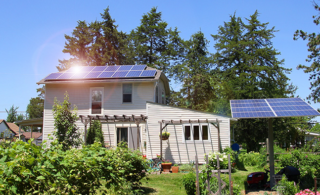 Organic Home Gardening Tips to Feed Your Whole Family
Organic Home Gardening Tips to Feed Your Whole Family 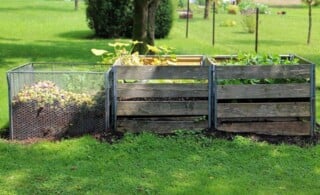 Composting and Landscaping at Home
Composting and Landscaping at Home 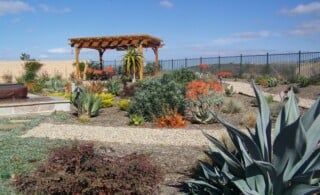 Xeriscaping: The Low-Water (Low-Effort) Landscaping Solution
Xeriscaping: The Low-Water (Low-Effort) Landscaping Solution 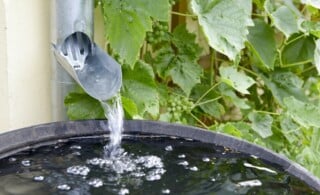 8 Reasons to Add a Rain Barrel to Your Garden
8 Reasons to Add a Rain Barrel to Your Garden 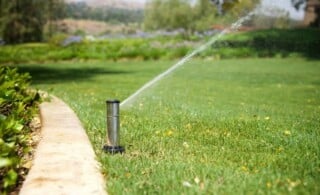 8 Water-Saving Home Renovations
8 Water-Saving Home Renovations 

Are You Familiar With This Topic? Share Your Experience.